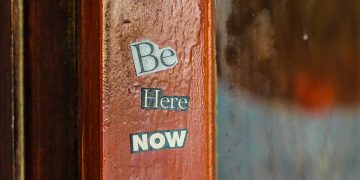Unwind and Unplug: The Ultimate Guide to Physical Relaxation Techniques
In today’s fast-paced world, it can be challenging to find time to relax and unwind. However, taking care of your physical well-being is crucial for overall health and happiness. In this comprehensive guide, we will explore various relaxation techniques that can help you unwind and unplug from the stresses of daily life.
The Importance of Physical Relaxation
Physical relaxation is essential for maintaining a healthy mind and body. When we are constantly stressed and tense, it can lead to a variety of health issues such as high blood pressure, muscle tension, and even mental health disorders like anxiety and depression. By incorporating relaxation techniques into your daily routine, you can reduce stress levels, improve sleep quality, and increase overall well-being.
Deep Breathing Exercises
One of the simplest and most effective ways to relax your body is through deep breathing exercises. By taking slow, deep breaths, you can activate your body’s relaxation response and calm your nervous system. To practice deep breathing, find a quiet space where you can sit or lie down comfortably. Close your eyes and take a deep breath in through your nose, allowing your belly to expand. Hold the breath for a few seconds, then exhale slowly through your mouth. Repeat this process for several minutes until you feel more relaxed and centered.
Progressive Muscle Relaxation
Another effective technique for physical relaxation is progressive muscle relaxation. This involves tensing and then relaxing different muscle groups in your body to release tension and promote relaxation. To practice progressive muscle relaxation, start by sitting or lying down in a comfortable position. Begin by tensing the muscles in your toes and feet for a few seconds, then release the tension and allow the muscles to relax. Move on to the muscles in your calves, thighs, abdomen, chest, arms, and finally your face and neck. By systematically tensing and relaxing each muscle group, you can release built-up tension and promote deep relaxation.
Guided Imagery
Guided imagery is a relaxation technique that involves visualizing peaceful and calming scenes to help relax your mind and body. To practice guided imagery, find a quiet space where you can sit or lie down comfortably. Close your eyes and imagine yourself in a serene and tranquil location, such as a beach, forest, or mountain. Focus on the sights, sounds, and sensations of this imaginary place, allowing yourself to fully immerse in the experience. Guided imagery can help reduce stress, anxiety, and promote deep relaxation.
Massage Therapy
Massage therapy is a popular relaxation technique that can help release tension and promote physical relaxation. Professional massage therapists use various techniques such as Swedish massage, deep tissue massage, and aromatherapy to help relax the muscles, improve circulation, and reduce stress. If you don’t have access to a massage therapist, you can also practice self-massage techniques at home using a foam roller, massage ball, or your hands. By incorporating regular massage therapy into your routine, you can promote relaxation and improve overall well-being.
Yoga and Stretching
Yoga and stretching are excellent ways to relax your body and release tension. Yoga combines physical postures, breathing exercises, and meditation to promote relaxation and reduce stress. By practicing yoga regularly, you can improve flexibility, strength, and balance while promoting relaxation and well-being. Stretching is another effective way to relax your muscles and release tension. Focus on stretching tight and tense areas of your body, such as your neck, shoulders, back, and hips. By incorporating yoga and stretching into your routine, you can promote physical relaxation and improve overall health.
Healthy Sleep Habits
Getting an adequate amount of quality sleep is essential for physical relaxation and overall well-being. Poor sleep can lead to increased stress, fatigue, and mood disturbances. To promote healthy sleep habits, establish a regular sleep schedule, create a relaxing bedtime routine, and create a comfortable sleep environment. Avoid stimulants like caffeine and electronics before bedtime, and practice relaxation techniques like deep breathing or guided imagery to help you unwind and prepare for sleep. By prioritizing sleep and practicing healthy sleep habits, you can promote physical relaxation and improve overall health.
Conclusion
In conclusion, physical relaxation is essential for maintaining a healthy mind and body. By incorporating relaxation techniques such as deep breathing, progressive muscle relaxation, guided imagery, massage therapy, yoga, stretching, and healthy sleep habits into your daily routine, you can reduce stress levels, improve sleep quality, and promote overall well-being. Remember to prioritize your physical well-being and take time to unwind and unplug from the stresses of daily life. Your body will thank you for it.
By following the tips and techniques outlined in this guide, you can achieve physical relaxation and improve your overall well-being. Take the time to prioritize your health and make self-care a priority in your daily routine. Unwind and unplug from the stresses of daily life, and enjoy the benefits of a relaxed and rejuvenated mind and body.





































































